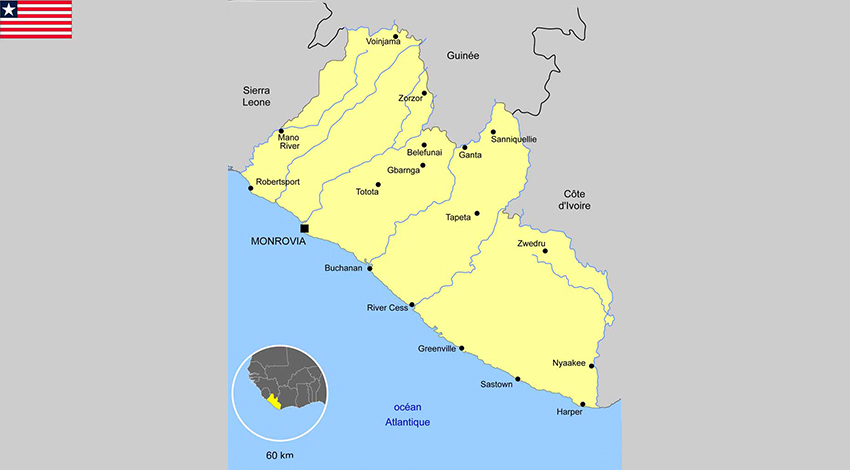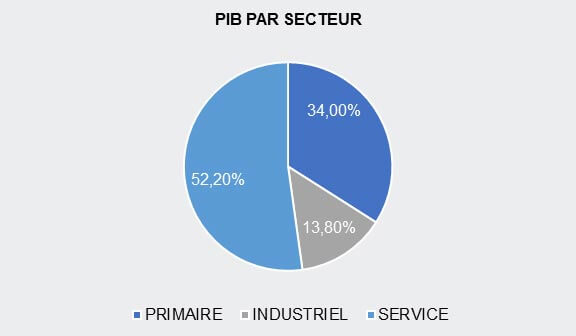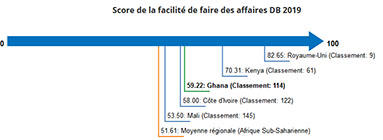
1.1 Political and geographic characteristics of Liberia
Political system
Settlement of freed slaves from the US in what is today Liberia began in 1822; by 1847, the America-Liberians were able to establish a republic. William TUBMAN, president from 1944-71, did much to promote foreign investment and to bridge the economic, social, and political gaps between the descendants of the original settlers and the inhabitants of the interior. The President directly elected by absolute majority popular vote in 2 rounds if needed for a 6-year term (eligible for a second term); election last held on 10 October 2017 with a run-off on 26 December 2017); the runoff originally scheduled for 7 November 2017 was delayed due to allegations of fraud in the first round, which the Supreme Court dismissed.
- Area : 111.369 km2
- Population : 4.809.768 (Juillet 2018)
- Density : 43 habitants/km2
- Population growth rate : 2,59%
- Urban population : 51,2% (2018)
- Official language : English
International agreements
Liberia is part of ECOWAS and the West African Monetary Zone with Cabo Verdo, The Gambia, Ghana, Guinea Conakry, Nigeria and Sierra Leone, and the Mano River with Cote d’Ivoire, Guinea and Sierra Leone.
1.2 Macroeconomic Framework
1.3 Macroeconomic performance of Liberia
1.4 Doing business Ranking
- Benin (capital : Porto-Novo)
- Burkina Faso (capital : Ouagadougou)
- Cape Verde (capital : Praia)
- Ivory Cost (capital : Abidjan)
- Gambia (capital : Banjul)
- Ghana (capital : Accra)
- Guinea (capital : Conakry)
- Guinea Bissau (capital : Bissau)
- Liberia (capital : Monrovia)
- Mali (capital : Bamako)
- Niger (capital : Niamey)
- Nigeria (capital : Abuja)
- Senegal (capital : Dakar)
- Sierra Leone (capital : Freetown)
- Togo (capital : Lomé)




